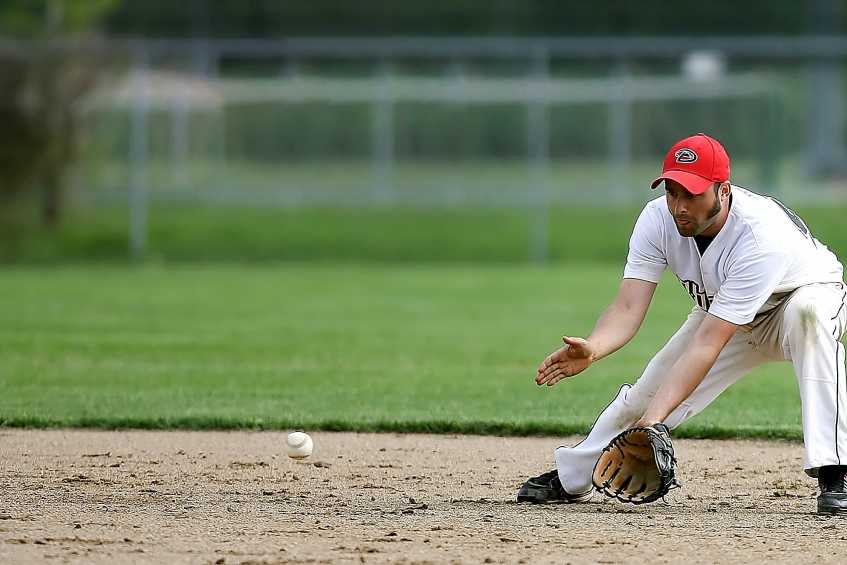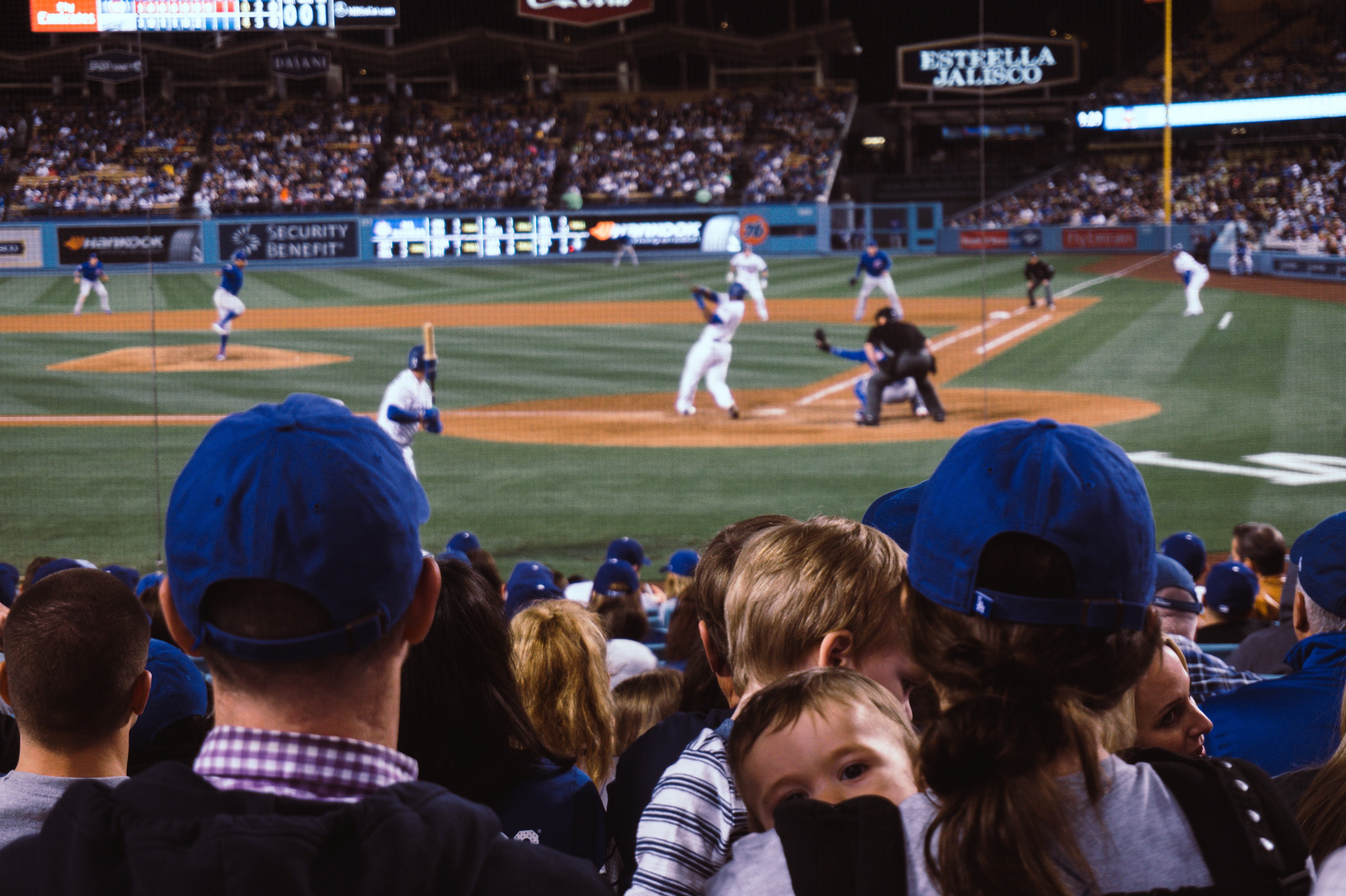
Baseball is a sport that's rich in history, with a unique set of rules and strategies that have been developed over the years. One of the most important aspects of baseball is the double play, which is a defensive play that can change the course of a game. A double play occurs when the defense records two outs in one play. It's a remarkable feat that requires quick reflexes, teamwork, and precise execution.
In this post, we'll take a closer look at what a double play is in baseball and how it's recorded. We'll also dive into one of the most common types of double plays, the 6 4 3 double play, and explain how it differs from other double plays. Whether you're a casual fan or a seasoned veteran of the game, understanding the ins and outs of the double play is essential to appreciating the intricacies of baseball.
But first, let's talk about why double plays are so important in baseball. The game is all about momentum, and a well-executed double play can shift that momentum in an instant. It's not just about recording outs, either; a double play can deflate the opposing team's confidence and energize the defense and the crowd. In a close game, a single double play can be the difference between winning and losing. So, without further ado, let's get into the nitty-gritty of double plays in baseball.
To understand what a double play is, we first need to understand how it's recorded. According to the official rules of baseball, a double play occurs when there are fewer than two outs, and the defense records two outs on the same play. There are different ways to record a double play, but the most common is the force-out double play. This happens when there's a runner on first base, and the batter hits the ball on the ground to an infielder. The infielder then throws the ball to the second baseman, who steps on second base to force out the runner coming from first, and then throws the ball to the first baseman, who tags the batter before he reaches first base.
Another type of double play is the tag-out double play, which occurs when there's a runner on first base and a runner on second base, and the batter hits a fly ball to the outfield. The outfielder catches the ball and throws it to the infielder, who tags the runner on second base before he can get back to the base. The infielder then throws the ball to the first baseman, who tags the batter before he reaches first base. This type of double play is less common than the force-out double play.
Recording a double play requires a combination of quick thinking, precise execution, and teamwork. The defense needs to anticipate where the ball is going and be in the right position to make the play. The infielders need to communicate with each other to ensure they're covering the right bases and making the right throws. The pitcher also plays a critical role in setting up the defense and keeping the runners in check.
The importance of executing a double play correctly cannot be overstated. A poorly executed double play can result in the opposing team scoring runs or extending an inning, putting more pressure on the defense. On the other hand, a well-executed double play can shift the momentum in favor of the defense, creating a spark that can carry over to the offense. With that in mind, let's take a closer look at one of the most common types of double plays in baseball: the 6 4 3 double play.

The 6 4 3 double play is a type of force-out double play that's executed by the shortstop, second baseman, and first baseman. The name "6 4 3" refers to the position numbers of the players involved in the play: the shortstop is number 6, the second baseman is number 4, and the first baseman is number 3.
The 6 4 3 double play typically happens when the batter hits the ball on the ground towards the shortstop or second baseman. The shortstop fields the ball and throws it to the second baseman, who steps on second base to force out the runner coming from first. The second baseman then throws the ball to the first baseman, who tags the batter before he reaches first base.
The 6 4 3 double play is a thing of beauty when executed correctly. It requires precise timing and quick reflexes, as the infielders need to make split-second decisions about where to throw the ball. The shortstop needs to field the ball cleanly and make an accurate throw to the second baseman, who needs to be in the right position to make the force-out. The first baseman needs to be ready to catch the ball and tag the batter before he reaches first base.
One of the reasons why the 6 4 3 double play is so effective is that it's quick and efficient. The ball is moving from one infielder to the next in a matter of seconds, giving the runner almost no chance to make it to first base. This type of double play is often used to get out of a jam when there are runners on first and second base, or when the game is tied and the defense needs to make a big play to stay in the game.
The 6 4 3 double play is not only impressive to watch, but it's also a testament to the skill and athleticism of the players involved. The shortstop and second baseman need to have quick reflexes and strong arms, while the first baseman needs to be able to make a quick tag out in baseball. In addition, the players need to have a deep understanding of each other's strengths and weaknesses, as well as the ability to communicate effectively on the field.
The 4 6 3 double play is another common type of force-out double play in baseball. As mentioned earlier, this type of double play involves the second baseman, shortstop, and first baseman. However, in this case, the second baseman is the player who receives the ball from the pitcher or catcher and then throws it to the shortstop, who in turn throws it to the first baseman to complete the double play.
Like the 6 4 3 double play, the 4 6 3 double play requires precise timing and quick reflexes from the players involved. The second baseman needs to be in the right position to receive the ball from the pitcher or catcher, while the shortstop needs to be ready to make a quick catch and throw to the first baseman. The first baseman needs to be able to make a quick tag on the runner coming from the opposite direction, completing the double play.
One reason why the 4 6 3 double play is effective is that it's often used to get out of a jam when there's a runner on first base and the batter hits a ground ball to the second baseman or shortstop. The second baseman or shortstop can quickly field the ball and throw it to the other player, who then throws it to the first baseman to get the out at first and complete the double play.
In addition, the 4 6 3 double play is often used to shut down a rally when the opposing team is threatening to score. By quickly recording two outs on the same play, the defense can regain control of the game and prevent the other team from gaining momentum.

While the 6 4 3 and 4 6 3 double plays are both force-out double plays, there are other types of double plays in baseball that differ in their execution and the number of players involved. One common type of double play is the tag-out double play, which occurs when a runner is caught between two bases and is tagged out by two players working together.
Another type of double play is the fly ball double play, which is much less common than force-out double plays. It occurs when a batter hits a fly ball to the outfield with a runner on first base. The outfielder catches the ball and throws it to the infield, where the fielder catches it and throws it to first base to double up the runner who left first base early.
In addition, there is the line drive double play, which is the rarest type of double play. This occurs when a batter hits a line drive that is caught by an infielder who then quickly tags the base or a runner before they can get back to the bag, resulting in two outs on the same play.
Double plays can be recorded in many different ways: As mentioned earlier, there are several different types of double plays in baseball, including force-out double plays, tag-out double plays, fly ball double plays, and line drive double plays. Each type of double play requires a different combination of fielders and skills to execute.
Double plays are often used to get out of tough situations: One of the main reasons why double plays are so valuable is that they can help a team get out of a jam. For example, if there are runners on first and second base with no outs, a double play can quickly clear the bases and give the defense two outs on the same play.
Double plays require coordination and communication: Double plays are not easy to execute, and they require a great deal of coordination and communication between the fielders involved. Each player needs to be aware of their role in the play and be able to quickly react to the ball as it's hit.
Double plays can be a game-changer: When executed correctly, a double play can completely change the momentum of a game. It can turn a potential scoring opportunity for the opposing team into a quick out and give the defense a much-needed boost.
Double plays are exciting to watch: There's nothing quite like the feeling of watching a double play unfold on the field. It's a testament to the skill and athleticism of the players involved, and it can be one of the most exciting moments in any baseball game.
Understanding the basics of double plays in baseball is essential for any fan of the sport. Whether you're watching from the stands or following along at home, knowing the different types of double plays and how they're executed can add to your overall appreciation of the game. So, the next time you see a double play unfold on the field, take a moment to appreciate the skill and strategy that went into making it happen.
In conclusion, the 6 4 3 double play is one of the most impressive feats of teamwork and athleticism in all of baseball. It requires precise coordination between the shortstop, second baseman, and first baseman, and when executed correctly, it can be a game-changing moment in any game. As a fan of the sport, understanding the nuances of double plays and how they work can help you appreciate the game even more.
The 6 4 3 double play is just one of many different types of double plays that can occur in baseball, but it's undoubtedly one of the most exciting. From the moment the ball is hit, the fielders must work together to make quick decisions and execute the play flawlessly. It's a testament to the skill and athleticism of the players involved, and it's no wonder that it's such a crowd-pleaser.
At the end of the day, baseball is a game of strategy, skill, and teamwork, and the 6 4 3 double play exemplifies all of these qualities. So, the next time you're watching a game, keep an eye out for this impressive play and take a moment to appreciate all of the hard work and practice that goes into making it happen. And if you're looking for more baseball facts and information, be sure to check out our blog for even more cool insights and tips.
Photos Courtesy: Keith Johnston Pierre-Etienne Vachon Simon Daoudi
Chris Sloan is a former baseball league commissioner and travel baseball coach who has made significant contributions to the sport. In 2018, he founded selectbaseballteams.com, a website that helps parents find youth and travel baseball teams in their local areas. Since its launch, the website has experienced impressive growth, offering a wealth of resources including teams, news, tournaments, and organizations. Chris's unwavering passion for baseball and his innovative approach to connecting parents with quality baseball programs have earned him a respected reputation in the baseball community, solidifying his legacy as a leading figure in the world of youth and travel baseball.
There are 0 comments on "What is a 6 4 3 Double Play in Baseball?"
chandler allen says:
"Hi my name is chandler, i’ve enjoyed..."
On Wanting to tryout for summer ball. as an 18 year old
david graham says:
"With no current MLB team in Canada,..."
On With no current MLB team in
Charles Chavez says:
"To All Coaches: Do you have13U or..."
On Looking for Games